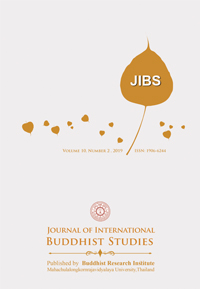An Analytical Study on the Concept of the Wise (Pandita) in Theravada Buddhist Perspective
Keywords:
Concept of the Wise, Theravāda Buddhist PerspectiveAbstract
This universe is existing with the duality of the wise and foolish or good and bad. As we are social human beings, to associate with others, we need to know who is wise persons and what is wise concepts. So, this research was to analyze the concept of the wise in Theravāda Buddhist perspective. In this research article, specifically, the writer will present the teaching of the wise in Buddhist Scriptures, the doctrines relating to the wise in Buddhism, the concept of the wise according to Theravāda Buddhist Perspective. As an analytical research, qualitative research method was applied in the study.
To practice and to be wise, we need to know the meaning of the wise, characteristic of the wise, types of the wise. According to Theravāda Buddhist scripture, the person who is cleaver, skillful, circumspect, and intelligent or knowledgeable, in general sense, can be called as a wise person. Wise persons think good thoughts, speaks good words, and does good deeds. On the other hand, wise persons cultivate straight mind, forgiveness, friendliness and fearlessness.
According to Buddhist literature, a person can be intellectually wise with by listening to teachers, by thinking right way, by taking notes or writing, and by practice mindfulness meditation. Wise person process with middle way. Wise persons practice threefold training which are morality or ethic, concentration or stability and wisdom or inspiration. The persons who can defeat ignorance, is really wise. Wise persons’ real mental qualities are development of insight meditation and realizing ultimate truths.
References
Davids, Thomas W. R. and William Srede. Pāli-English Dictionary. London: The Pāli Text Society, 1921-1929.
Davids, Thomas W. R. The Long Discourses of the Buddha. London: The Pāli Text Society, 1966.
Edward, Mullier. The Atthasālinī, Dhammasaňgani. London: The Pāli Text Society, 1979.
Feer, Leon M. The Connected Discourses of the Buddha, Samyutta Nikāya. London: The Pāli Text Society, 1990.
Narada, A Manual of Abhidhamma (Abhidhammattha Sangaha). Malaysia: Buddhist Missionary Society Publication, 1979.
Rahula, Walpola. What the Buddha Taught. Taiwan: The Corporate Body of the Buddha Education Foundation, 1978.
Woodward, The Book of the Gradual Sayings, Aṅguttara Nikāya. London: The Pāli Text Society, 1961.







